Top>Research>A 30 year commitment to giant flying squirrels—changes in distribution and environmental education in Tama Ward—
 Index
Index

Hiroyuki Okazaki [Profile]
Education Course
A 30 year commitment to giant flying squirrels—changes in distribution and environmental education in Tama Ward—
Hiroyuki Okazaki
Teacher of zoo-ecology, biological science education and science education methodology, Chuo University Junior and Senior High School
The beauty of giant flying squirrels
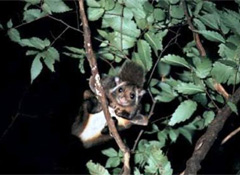
Fig.1 Giant flying squirrel
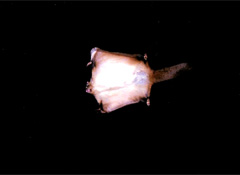
Fig.2 Giant flying squirrel gliding through the air like a flying cushion
This is my 34th year of researching giant flying squirrels. What exactly is the attraction that has led me to study giant flying squirrels for such a long time? I have also continued a giant flying squirrel watching club for 34 years, and not once have I cancelled it due to lack of numbers. There have been times when the rate of applicants to available spaces has been more than five-fold. What do people want when they participate in a giant flying squirrel watching club?
Giant flying squirrels (Petaurista leucogenys) (Fig.1) belong to the rodent family and travel by gliding. Because they have no wings, they can not fly freely through the air like bats. They simply glide from tree to tree by using flying membranes which grow from their front to rear legs. A 40 square centimeter animal gliding in the middle of the night looks just like a flying cushion, and it moves me no matter how often I see it. Sometimes they will ride the wind slowly, and at other times they will pass over your head in an instant. The shape of a small cat-sized creature gliding through the open sky is the most beautiful thing. Especially in the case of Mt. Takao (Hachioji City, Tokyo), they fly with the city lights below, so you get double the enjoyment with the night view and the beauty of the squirrels. In a questionnaire for club participants, many people wrote that the gliding moved their hearts and was the most impressive spectacle.
The secret of gliding
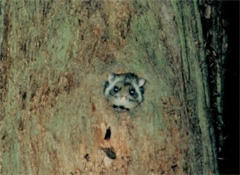
Fig.3 Peeking out of their hole 30 minutes after sunset
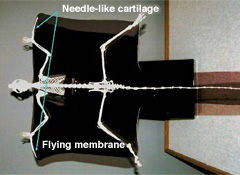
Fig.4 Increasing flying membrane area by stretching their needle-like cartilage
Giant flying squirrels are totally nocturnal animals which become active and leave their nests of tree trunks (tree holes) or temple and shrine attics (Fig.3), 30 minutes after sunset, and return back to their nesting places 30 minutes before sunrise. For food, they eat nuts and leaves from perennial broad-leaved trees and conifers, nuts from oak trees (acorns), cherry and camellia flowers, and cones from cedar trees etc. When the giant flying squirrels leave their nests, they scamper up trees and glide. The gliding distance is about three times that of the height of the tree they leap from, so they can glide about 90 meters from a 30 meter tree. If the tree is on a mountain slope, the squirrels can fly even further. The record from Yakuo-in on Mt. Takao is 107 meters, but you can only dream about witnessing a flight like that. Seeing a giant flight like that overcomes you with emotion. The rudder slightly adjusts the outer muscles of the flying membrane, and changes the tension of the membrane.
Here, we will touch upon the relationship between the area of the body and volume. If one side is 1cm cubed with a 6㎤ area, the volume will be1㎤. If the body size is doubled (1 side becoming 2cm), then the area will be 24㎤, and volume 8㎤. When body size is doubled, surface area is reduced by 3㎤ per volume unit, so heat energy released from the body surface is reduced. For giant flying squirrels, which eat broad leaves with low nutritional value, it can be assumed that heat energy loss will be controlled by enlarging their bodies. But becoming bigger also means they become heavier, and a handicap to flying. So how do they get around this?
When giant flying squirrels glide, upward pressure (dynamic lift) occurs. In order to glide further dynamic lift must be increased. Dynamic lift increases proportionally at a multiple of two of the flying membrane area and gliding speed. In order to increase membrane area, it would be helpful to have longer arms and legs, but they would adversely affect their balance in their treetop life, and make them heavier, making life uncomfortable. But giant flying squirrel bodies are well formed with thin, mobile bones called needle-like cartilage in their hands (Fig.4) which are usually folded away in their wrists, but have been constructed to open out only for flight. Because of this cartilage, flying membrane area can be expanded only at flight time, without normally having to make the arms and legs longer. Furthermore, because the membrane covering the cartilage is rounded, it acts as an in-flight brake, keeping vortexes to a minimum. Next is speed. Because the squirrels can't have a run up in trees, when they glide, they climb up horizontal branches or to the top of trees, and take off by giving the branches a good kick to increase their speed. They accelerate by lowering their heads and soon reach a stable speed, and when they decide on their target branch, raise their bodies to decelerate. As a brake, they stretch out their four feet, creating a stratum in the air with their bodies to slow down. This is like a side-on parachute.
The gliding speed is determined by the weight to flying membrane area ratio (wing loading in specialist terms). The Eurasian flying squirrel weighs 120g, 1/10 of the size of a giant flying squirrel, and has a flying membrane 1/5 of the size, meaning the giant flying squirrel's flying membrane supports a weight more than twice that of the Eurasian flying squirrel. Accordingly, the disadvantage of extra body weight is supplemented by an increase in speed. The body and actions have actually been made extremely well for flight, renewing my surprise in the exquisiteness of nature.
Because the giant flying squirrel uses gliding as a means of moving in this way, the cutting down of trees suitable for gliding for development narrows and isolates their habitat, ultimately leading to extinction. The disappearance of wild animals due to construction such as housing, apartments and roads, is a frequent occurrence. With rapid development, even evidence of wildlife having lived there disappears. It was there that I felt continuous data need to be taken, so I started investigations into giant flying squirrel distribution from 1979.
Investigating giant flying squirrel distribution in Tama Ward
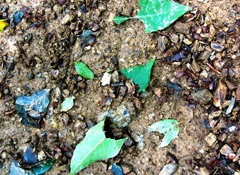
Fig.5 Giant flying squirrel bite marks (left-right symmetrical type)
At the time, there was no data on giant flying squirrel distribution in Tokyo and I could only conduct fragmentary investigations, but I started serious distribution investigations from 1993. Since then, I have conducted studies every three years. The terrain of Tokyo is high in the west and low in the east, and I could confirm the existence of the squirrels in most of the western hilly regions, so I concentrated my investigations around the distribution line along the hills (eastern limit line). My method to confirm the existence was to walk along the hills in the daytime looking for droppings, nesting holes or bite marks in the forests around shrines and temples, nature parks and houses, and go back to the places where I found evidence at night to directly confirm their existence. The droppings are balls five millimeters in diameter and have a fiber texture when split open so they can't be mistaken for other animals, and bite marks, found in many leaves, have a left-right symmetry and are easy to determine (Fig.5). Also, when the leaves have been folded in half and had only the centers eaten, a round hole will be opened in the middle, a bite mark characteristic of giant flying squirrels. If tree trunks and branches have a tree hollow with a diameter of about eight centimeters, there is a high chance of there being a nesting hole. But, because Eurasian flying squirrels and birds such as collared scops owls and broad-billed rollers also use tree hollows, confirmation from nesting holes alone was difficult, so I would go to possible habitats at night to determine their existence directly. I went around shrines, temples and houses in this way one by one, and marked them down on a map. In order to find a small piece of evidence you have to go out on foot, but this job is more tiring than it seems. The sight of me crouching down searching for droppings in shrines must have seemed suspicious, and I was reported to the police numerous times. But, through continuous steady investigations, the locals began to understand my actions, and I started to get an idea of changes in giant flying squirrel distribution in the hilly regions.
Gradually narrowing habitat
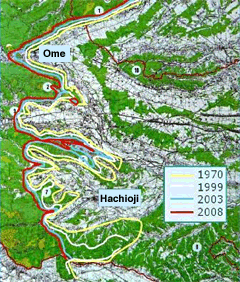
Fig.6 Changes in the eastern limit line of giant flying squirrel distribution
(1970 eastern limit line based on investigation results)
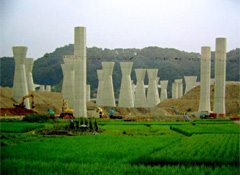
Fig.7 Road construction in the hilly regions (Akiruno City)
Through investigations so far, while there are slight differences depending on region, the giant flying squirrel distribution line (eastern limit line distribution) is definitely moving west (mountain side) (Fig.6). When broken down into specific hills, very little change has been observed in the Kaji hill region of Ome City, but the squirrels have become extinct in other areas. The habitat to the east of Takiyama Kaido in the Kusabana hills of Akiruno City is gradually decreasing. Also, with the opening of the Central Metropolitan Motorway, it will be possible to see changes in distribution, so the situation needs to be monitored in the future. In the Kasumi hills of Hachioji, information confirming existence is decreasing annually, and there are some areas where the squirrels have disappeared. In the past, they were found living at the top of the Hachioji hills until 1999, but now there is no evidence and the distribution line has retreated. In the hilly regions, deforestation has taken place in order to build large scale golf courses and cemeteries, and roads crossing north to south have divided the base of the hills and the summit, isolating much of the habitat (Fig.7). From 1960 to around 1970, development proceeded in the Tama hills, and many structures such as residential sections, housing complexes, schools and golf courses appeared. Due to this the shape of the hills changed beyond recognition, forested areas were divided, in turn isolating the giant flying squirrel's habitat. From fragmentary information and forested area data from 1905, it can be estimated that the giant flying squirrel lived in a wide area covering the whole of the Tama hills, but we can only confirm their existence in a few of the areas (Zushimachi and Onojimachi Historical and Environmental Preservation Area in Machida City).
For giant flying squirrels to live there needs to be an area of trees, trees which provide food year round, and tree hollows etc. which can become nests. In areas where they have become extinct, nesting holes, plants for food, and tall trees possible for gliding, have disappeared through deforestation, and trees have been cut down for development of the surrounding forests, and we can see isolation from the dividing of their habitat. With isolation, individual movement disappears and they become extinct.
To protect the giant flying squirrel, leaving groups of trees untouched is the best option, but it is important to plant trees of the height of those seen on the roadside at regular interviews, and ensure the habitat doesn't become isolated. Also, it is important to trial turning the many cedar and cypress forests in Tokyo into broad-leaf trees which are a source of food for the squirrels. By continuing the forest with a belt (green belt, corridor), it can also be used by animals which move on foot. In the future, these things should be taken into account when considering development, and it is necessary to deepen the road to coexistence between wildlife and humans.
Using giant flying squirrels as educational materials
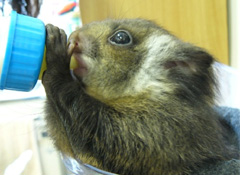
Fig.8 Baby giant flying squirrel we took in to protect
Even at the school where I work, giant flying squirrel watching has taken place in biology club activities, special lessons, and PTA activities. Biology club students do this every month and also conduct wild animal surveys. With each observation they participate in, they nurture an eye for looking at nature, and generate a feeling toward nature. I also get the biology club members to work as staff when there is a general giant flying squirrel watching club gathering, and there are many times when they take on the role of guides. There are some graduates who used the observations as a reason for choosing their next path in life, and some who become more interested in nature through the observations, and have gone on to enter natural science or environmental fields. From their experience as staff for the watching group, an interest in education sprouts inside the children, and some have entered the education world. As activities in the biology club, we conduct surveys on when giant flying squirrels are active, their eating habits, and habitat, but we also have opportunities to use data in the wild, that has been gathered from baby squirrels we shelter that have fallen from their nests (Fig.8). It is almost two years since giant flying squirrel investigations started at Chuo University High School. At the junior high school, new students entered the club this year so it has only been one year there, but along with conducting giant flying squirrel investigations in various environments such as Mt. Takao and Akiruno City, Ome City and Hinoharamura, they are training their instincts in the wild (Figs 9, 10, 11). While inexperienced, if they gather data on what they observed, I believe that they will be able to see things that they couldn't before, and I am looking forward to the future. Through giant flying squirrel observations and investigations, it is not only looking at the natural world through wide eyes, and saying "protect the forest," but I want to create people who can take concrete actions. It seems that I will continue my long relationship with the excellent environmental education material that is the giant flying squirrel.
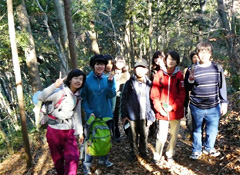
Fig.9 Investigating traces of giant flying squirrels at Mt. Takao
(Junior and senior high school biology club)
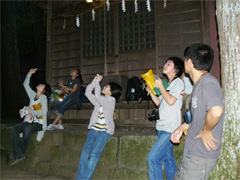
Fig.10 Night time survey at a shrine in Akiruno City
(At a shrine where both giant flying squirrels and Eurasian flying squirrels live)
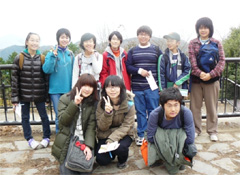
Fig.11 Finishing wildlife investigations at Mt. Takao
- Hiroyuki Okazaki
Teacher of zoo-ecology, biological science education and science education methodology at Chuo University Junior and Senior High School - Born in Tokyo in 1958. Graduated from the College of Biological Sciences, University of Tsukuba in 1980. Completed his master degree at the Graduate School of Teacher Education, Tokyo Gakugei University in 1999. Master of Education. Started giant flying squirrel research in his university days and has climbed Mt. Takao more than 800 times.
His current research topic is the relationship between giant flying squirrel distribution and environmental factors. Conducts giant flying squirrel and wildlife investigations with his students in the mountains and hills of Tama Ward, and is called Musasabi Sensei (giant flying squirrel teacher) by his students. Awards: 2003 Tokyo Shimbun Education Award. 2007 Tokyo Metropolitan Board of Education Staff Award. 2008 Ministry of Education, Culture, Sports, Science and Technology Outstanding Teacher Award. Member of the Mammological Society of Japan Squirrel and Giant Flying Squirrel Network. The Society of Biological Sciences Education of Japan member. - Major publications: I Want to Meet a Giant Flying Squirrel! (Shobunsha, 2004) Mysteries of Tokyo Encyclopedia (coauthored, Jinbutsujukisha, 1997) Everyday Wildlife Encyclopedia (coauthored, Tokyodo Publishing, 1998)
- Research Activities as a Member of Research Fellowship for Young Scientists (DC1), Japan Society for the Promotion of Science (JSPS) Shuma Tsurumi
- Important Factors for Innovation in Payment Services Nobuhiko Sugiura
- Beyond the Concepts of Fellow Citizens and Foreigners— To Achieve SDGs Goal 10 “Reduce Inequality Within and Among Countries” Rika Lee
- Diary of Struggles in Cambodia Fumie Fukuoka
- How Can We Measure Learning Ability?
—Analysis of a Competency Self-Assessment Questionnaire— Yu Saito / Yoko Neha - The Making of the Movie Kirakira Megane








